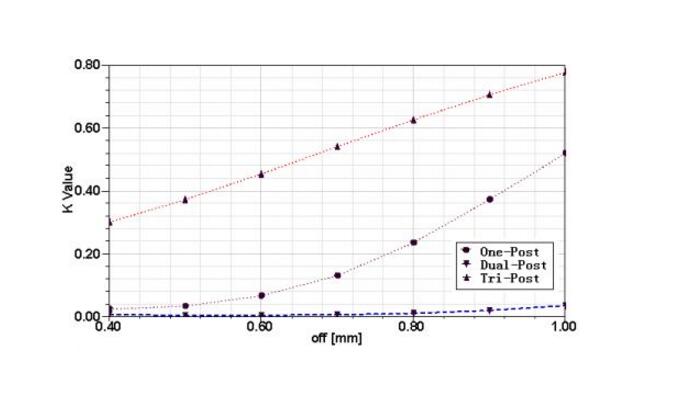The Ka band is part of the microwave band of the electromagnetic spectrum, and the Ka band has a frequency range of 26.5-40 GHz. Ka stands for K-above, in other words, the band is directly above the K-band. The Ka band, also known as the 30/20 GHz band, is commonly used for satellite communications. This paper introduces the design of antennas and mixers based on Ka-band.

Ka-band waveguide to microstrip to the ridge fin line transition This paper mainly introduces the waveguide-microstrip to the ridge fin line transition structure, using CST software to simulate the circuit structure in the Ka-band. The structure can achieve a good transition effect in a wide frequency band, and has the advantages of compact structure, small size, easy assembly and mass production.
A Ka-band wideband power synthesis network based on waveguide H-plane is proposed based on the scholar's theory. A Ka-band wideband power synthesis network based on waveguide H-plane is proposed. The power division network can achieve a bandwidth of nearly 7.5 GHz. In the 29.5-37 GHz range, the amplitude difference between the two ports is less than 0.4 dB, and the return loss is less than -19.5 dB.
Ka Band Parallel Inductor Pin LTCC Filter This paper uses LTCC technology to design a parallel inductor pin filter with relatively stable performance. During the design process, one or two parallel inductor pin structures were selected. In order to further achieve stable performance, the two microstrip-SIW transition structures were compared, and the microstrip-SIW gradient transition was finally selected.
Ka-band single-pulse plane and difference network and antenna research. Based on the deformation bridge of the slot bridge, a two-dimensional planar waveguide type and difference network are designed and combined with the Ka-band microstrip array antenna. The integration of the difference network and the antenna. The experimental results show that the sum and difference network has the advantages of low loss and high consistency, which lays a foundation for miniaturization and integration of the single-pulse antenna feeder system.
Ka-band frequency synthesizer based on DDS-driven PLL structure This paper introduces a scheme and circuit simulation design of a Ka-band frequency source. The frequency source combines DDS and mixing phase-locked loop to complement the length and make the whole system have narrow steps. , agile frequency, low phase noise, low spurious characteristics.
Design and implementation of Ka-band series-fed microstrip resonant omnidirectional antenna This design adopts a series feeding method to design a resonant microstrip omnidirectional antenna operating in the ka band (required from 35.5 GHz to 36 GHz).
Ka band receiving front end design This paper mainly deals with the Ka band receiving component front end. Through the system-level simulation of the multi-chip RF receiving front end, the noise coefficient, power consumption, image rejection and clutter suppression analysis of the receiving system are realized, and the circuit design is effectively carried out.
Ka-band wideband waveguide microstrip transform design This paper uses the high-frequency electromagnetic field simulation software HFSS to quickly design the E-plane probe-mode waveguide-microstrip transition structure. The full-wave analysis method is more accurate and faster than the spectral domain analysis. Good results are achieved through simulation design and physical testing. In the frequency range of 30 GHz to 40 GHz, the standing wave is <1.5, and the insertion loss is <1 dB.
Ka-band ultra-wideband quasi-eight-wood antenna This paper uses the LTCC technology to design an ultra-wideband quasi-eight-wood antenna in the Ka-band. The antenna is mainly composed of a feeding structure, a main radiating element, a parasitic radiating element and a grounding surface (also as a reflector), and the principle and design method thereof are very similar to the traditional Yagi antenna.
Design of Ka-band fourth harmonic mixer using CMRC structure This paper introduces the basic principle of harmonic mixer, analyzes the slow wave and broadband resistance characteristics of CMRC structure, and designs a good Ka-band broadband with good performance. With a fourth harmonic mixer. The conversion loss has a bandwidth of 4.5 GHz within 15 dB. At the RF frequency of 37.5 GHz, the local oscillator power is 10 dBm, and the intermediate frequency is 900 MHz, the conversion loss is 7.2 dB. Experimental research work is in progress.
Automotive Staple,Automotive Industrial Staple,Moistureproof Automotive Staple,Hog Ring Blunt Galvanized Nail
Zhejiang Best Nail Industrial Co., Ltd. , https://www.beststaple.com
